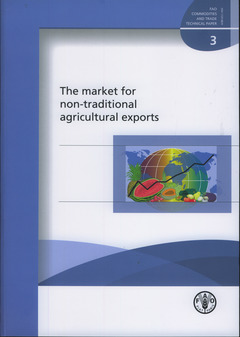Description
Market for non-traditional agricultural exports
FAO Commodities and Trade technical paper Series, Vol. 3
Language: English
Subjects for Market for non-traditional agricultural exports:
Publication date: 06-2004
160 p. · 21x30 cm · Paperback
160 p. · 21x30 cm · Paperback
Description
/li>
The last decade has witnessed a steady decline in the dollar values of many of the traditional agricultural export crops (TAEs) from developing countries and has highlighted the risks of depending upon a very narrow export base for foreign exchange earnings. Breaking the dependence upon the traditional primary commodities and diversifying into higher value or added value exports is not easy. This report provides an overview of the market for non-traditional agricultural exports or NTAEs. In particular, the report focuses upon the trends in international trade in these products, the trade and import policies of the major destination buyers, the extent of the adding-up" problem for selected NTAEs, the lessons learned, and the prospects for developing niche markets for organic and fair trade NTAEs. The report provides detailed statistical data on trends in the export of NTAEs, during the ten-year period 1992 to 2001, both in volume and value terms, analyses the contribution of developing countries and least developed countries to trade in NTAEs, and identifies the leading developing country exporters. Trade and import policies of the key destination countries for NTAE = the European Union, the United States of America and Japan = are examined. Trade barriers such as tariffs and other import measures, including the complex area of phytosanitary controls, are examined and the impacts of tariff liberalization, tariff escalation and the extent of tariff preferences for developing country exporters of NTAEs are discussed. The report also explores the degree to which an increase in exports may lead to a proportionately lower increase, or even to a decline, in export revenues for selected fruits and vegetables among key countries and regions. A detailed review of the current literature on NTAEs is provided, with a particular focus on key issues for developing countries in the export horticulture sector. Other market opportunities for NTAEs are described focusing on developments in the markets for fair trade and organic produce.
© 2024 LAVOISIER S.A.S.

